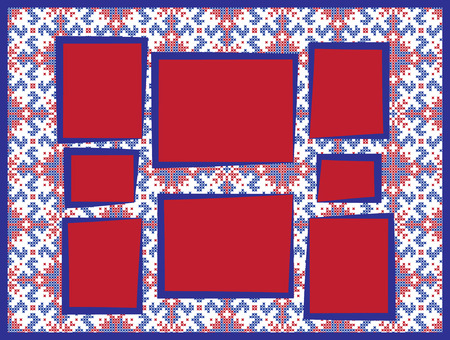Understanding Feng Shui Principles in the British Context
Feng Shui, an ancient Chinese practice focused on harmonising individuals with their surrounding environment, has found a receptive audience far beyond its Eastern origins. In Britain, where heritage homes and contemporary interiors coexist, integrating Feng Shui offers a unique opportunity to blend tradition with modernity for enhanced wellbeing—especially in the pursuit of better sleep. The fundamentals of Feng Shui rest upon the careful arrangement of space, mindful selection of materials, and thoughtful placement of objects to facilitate the optimal flow of energy or “chi.” When reinterpreted through the lens of British design sensibilities, these principles can be adapted without losing their core intent. Embracing local materials such as oak, wool, and stone not only honours British craftsmanship but also aligns with Feng Shui’s emphasis on natural elements. Furthermore, British culture’s preference for subtlety and understated elegance complements Feng Shui’s drive for balance and calm, particularly in bedroom spaces. By understanding how these ancient guidelines can be woven into the fabric of British aesthetics and cultural norms, homeowners are empowered to create restful sanctuaries that support restorative sleep while celebrating local character.
2. Selecting Authentic British Materials for Tranquil Spaces
When designing a restful sanctuary, the materials you choose play a pivotal role in shaping both atmosphere and energy flow. Integrating authentic, locally sourced British elements not only grounds your bedroom in its regional heritage but also harmonises beautifully with Feng Shui principles to enhance restorative sleep. Let’s explore three quintessentially British materials—Cotswold stone, British oak, and wool—and discover how their unique properties can create tranquil spaces.
Cotswold Stone: Earthy Stability
Cotswold stone, renowned for its honeyed warmth and subtle texture, is an exceptional choice for adding a sense of earthiness and stability. According to Feng Shui, natural stone embodies grounding energy, anchoring a room’s chi and fostering serenity. Whether used for feature walls or hearths, Cotswold stone infuses bedrooms with a timeless quality deeply rooted in the English countryside.
British Oak: Timeless Strength
British oak has long been prized for its strength and character. With its rich grain patterns and gentle golden hues, oak introduces both visual warmth and tactile comfort to interiors. In Feng Shui, wood signifies growth and vitality, supporting balanced energy while promoting relaxation. Incorporate oak through flooring, bed frames, or bespoke furniture to create an inviting yet calming retreat.
Wool: Natural Softness and Warmth
Wool—whether in throws, rugs, or upholstered pieces—is a classic British material that offers exceptional softness and insulation. Sourced from local sheep breeds, British wool is breathable and hypoallergenic, supporting healthy sleep cycles. In Feng Shui practice, textiles like wool absorb negative energy and soften harsh lines within a space, encouraging gentle energy flow throughout your bedroom.
Comparing Local British Materials for Bedroom Harmony
| Material | Natural Qualities | Feng Shui Benefit | Typical Uses in Bedrooms |
|---|---|---|---|
| Cotswold Stone | Earthy tone, textured surface | Grounding energy; stability | Feature wall, fireplace surround |
| British Oak | Strong grain, warm colour | Growth; balance; nurturing environment | Flooring, furniture, bed frames |
| British Wool | Softness, insulation | Absorbs negativity; enhances comfort | Bedding, rugs, cushions |
The Power of Local Craftsmanship
Choosing these local materials not only supports British artisanship but also brings an unmistakable sense of place into your home. When thoughtfully integrated with Feng Shui principles—such as positioning stone features for grounding or using wool textiles to soften sharp edges—you invite calmness and equilibrium into your bedroom. Ultimately, it’s this blend of tradition and mindful design that cultivates truly restful spaces tailored to the rhythms of British life.

3. Bridging British Heritage with Feng Shui Elements
Integrating the timeless elegance of British design heritage with the ancient wisdom of Feng Shui offers a unique approach to creating restful, balanced interiors. By thoughtfully combining classic British motifs—such as herringbone patterns, tartans, or the lush botanicals of William Morris prints—with the five Feng Shui elements (wood, fire, earth, metal, and water), you can cultivate an environment that nurtures better sleep and holistic well-being.
Celebrating Local Patterns and Textiles
British design is rich in iconic patterns and textures. Herringbone flooring or textiles evoke a sense of tradition and order, which aligns beautifully with the wood element in Feng Shui—symbolising growth, vitality, and renewal. Consider incorporating herringbone oak floors or wool throws to promote grounding energy in the bedroom.
Pairing Tartans with Earthy Calm
Tartan plaids, rooted in Scottish heritage, are imbued with warmth and history. When paired with earthy tones—think muted greens, soft browns, or gentle terracottas—they echo the earth element’s stabilising qualities. Use tartan cushions or bedspreads alongside clay pots or stone accents to foster a sense of security and peace in your sleeping space.
The Timelessness of William Morris Prints
William Morris prints bring nature indoors with their intricate foliage and floral motifs. These can be harmonised with both the wood and water elements: green leafy patterns stimulate rejuvenation (wood), while flowing lines or blue hues evoke calmness and fluidity (water). Wallpapers or curtains featuring these designs can soften harsh edges and infuse serenity into your room.
Balancing Elements for Restful Interiors
To achieve true harmony, balance is key. Introduce metallic finishes—like brass light fixtures or pewter picture frames—to represent the metal element’s clarity and focus. Gentle candlelight or a subtle red accent nods to the fire element, adding warmth without overwhelming. Finally, ensure that all elements are present but not overpowering; each should support a tranquil atmosphere that invites restful sleep while celebrating British craftsmanship and culture.
4. Optimising Bedroom Layouts with Local Touches
Arranging your bedroom to support both positive energy flow and a quintessentially British aesthetic requires a thoughtful blend of Feng Shui principles and the use of local architectural features. By integrating elements such as bay windows, fireplaces, and period cornices, you can create a restful sanctuary that respects tradition while nurturing wellbeing.
Positioning Key Features for Energy Flow
In many British homes, bedrooms are graced with distinctive period details. To optimise energy flow (or “chi”), consider the following:
| Feature | Feng Shui Guidance | British Contextual Advice |
|---|---|---|
| Bay Windows | Keep clear for natural light, which encourages vitality. Place seating or soft furnishings to create a calm reading nook. | Dress with layered curtains or Roman blinds in heritage fabrics; avoid cluttering the sill to maintain openness. |
| Fireplaces | Treat as an energetic focal point. Keep mantel tidy and display calming objects or artwork above it. | Use the hearth as an anchor for armchairs or a cosy rug, drawing on classic British comfort. |
| Period Cornices & Mouldings | Highlight with gentle uplighting for soothing ambience. Avoid heavy, dark paint that may weigh down the room’s energy. | Select paint shades inspired by historic British palettes—think chalky blues or muted greens—for a timeless look. |
Bed Placement and Circulation
The bed is central to both sleep quality and energy flow. In British bedrooms, position the bed so that you can see the door without being directly in line with it—a core Feng Shui principle known as the “command position.” Avoid placing the headboard against a window or under exposed beams if possible. If space is limited due to quirky layouts, balance with symmetrical bedside tables or lamps for harmony.
Clever Storage Solutions
Older British homes often have limited built-in storage. Maximise positive chi by keeping under-bed spaces tidy and using freestanding wardrobes or chests in natural wood finishes. Consider bespoke joinery that complements existing cornices and skirting boards for a seamless look.
Bringing It All Together
Optimising bedroom layouts in British homes means respecting historical character while encouraging tranquillity. By thoughtfully arranging furniture around local features and applying Feng Shui guidelines, you can achieve both visual harmony and restorative rest.
5. Colour Palettes for Restful Sleep: Rooted in British Landscapes
When designing a bedroom that encourages deep, restorative sleep, the careful selection of colour palettes is essential. Drawing inspiration from the gentle tones of the British countryside, expansive moors, and tranquil coastal scenery can provide a calming foundation that harmonises beautifully with Feng Shui principles. For instance, soft sage greens and muted heather purples reflect the rolling hills and wildflower meadows of rural England, fostering a sense of renewal and peace. These hues align with Feng Shui’s Wood element, which supports growth and vitality without overstimulating the senses.
Coastal Calm: Embracing Soft Blues and Greys
The serene blues and misty greys found along Britain’s iconic coastlines—from Cornwall to Northumberland—offer another palette ideally suited for restful bedrooms. According to Feng Shui, Water elements such as blue shades help promote relaxation and emotional balance. Opting for pastel blue walls or slate-grey textiles channels the soothing effect of sea breezes and gentle tides, creating an oasis of calm that echoes both local heritage and holistic design wisdom.
Earthy Tones: The Comfort of Natural Warmth
Incorporating earth-inspired colours—like gentle taupes, warm clays, and sandy beiges—draws on the grounding energy of British soil and stone. These tones not only echo traditional British cottages but also resonate with Feng Shui’s Earth element, which fosters stability, nourishment, and quietude. Layering these shades in bedding, rugs, or accent walls cultivates a cocoon-like sanctuary ideal for deep sleep.
Balancing Light and Shade: A Subtle Approach
Subdued lighting paired with these nature-inspired colour schemes further enhances a bedroom’s restful quality. Avoiding overly bright whites or stark contrasts aligns with both British sensibility—where light is often soft and diffuse—and Feng Shui guidance for avoiding harsh energies at bedtime. By embracing a palette rooted in local landscapes yet mindful of ancient spatial wisdom, your sleeping space becomes a harmonious retreat where rest comes naturally.
6. Working with Local Artisans and British Craft
Collaborating with UK-based artisans brings a layer of authenticity and bespoke quality to interiors that aim for harmony, tranquillity, and better sleep through the fusion of Feng Shui principles and regional craftsmanship. By engaging local makers, homeowners have the opportunity to curate furnishings and décor that are not only tailored to their unique space but also imbued with heritage and mindful intention.
The Value of Bespoke Furnishings
Commissioning custom pieces from British craftspeople allows for thoughtful integration of natural materials—such as sustainably sourced oak, wool, or linen—into the sleep environment. These tactile elements, crafted by skilled hands, resonate deeply with Feng Shui’s emphasis on grounding energy and promoting restful sleep. Each piece tells a story: from hand-turned bedside lamps in Cornish ceramics to Cotswold wool throws woven using traditional techniques. Such details elevate a bedroom into a personal sanctuary, reflecting both place and purpose.
Celebrating Regional Heritage
Working closely with local artisans supports the preservation of British craft traditions while introducing subtle, contextually relevant motifs into your home. Think of Scottish tartan-patterned textiles harmoniously blending with soft, earth-toned palettes recommended by Feng Shui for serenity. Or perhaps reclaimed timbers from historic buildings repurposed into headboards, infusing both character and positive chi.
Mutual Benefits: Sustainability and Connection
This approach not only fosters sustainability—reducing transportation emissions and championing ethical sourcing—but also strengthens community ties. The result is a harmonious space where every detail, from joinery to upholstery, contributes positively to the flow of energy and nurtures restorative sleep. By investing in British talent and tradition, you create an environment that feels uniquely yours: balanced, grounded, and deeply connected to its cultural roots.
7. Personalising Your British Bedroom Sanctuary
Creating a bedroom that nurtures restful sleep and positive energy is most meaningful when it reflects your own story. Embracing both Feng Shui principles and local British traditions, you can weave personal narratives into your space for an environment that feels truly auspicious and uniquely yours.
Honouring Heritage Through Design
Start by showcasing cherished family heirlooms or locally crafted items—think Welsh wool blankets, vintage ceramics from the Potteries, or Scottish tartan cushions. These not only provide a tangible link to your roots but also reinforce the sense of continuity and comfort crucial for good Feng Shui in the bedroom.
Infusing Local Culture with Intention
Select artwork or décor that tells your story: framed watercolours of your favourite British landscape, hand-thrown pottery from a Cornish artisan, or even pressed wildflowers gathered on countryside walks. Arrange these treasures thoughtfully, ensuring they evoke joy and calm without cluttering the space—an essential Feng Shui tenet for restful sleep.
The Power of Personal Symbols
Incorporate symbols that hold special meaning for you—a St. George’s Cross cushion, a miniature red telephone box, or a cricket bat passed down generations. When positioned mindfully, these accents enhance the room’s positive energy while grounding you in your personal history.
Customising with Colour and Texture
Choose paint colours and fabrics inspired by beloved local scenes—soft Cotswold stone hues, Lake District greens, or seaside blues from Cornwall. Layer these with textures such as Harris Tweed throws or linen curtains, blending tactile comfort with regional identity for a harmonious retreat.
Cultivating a Space That Feels Like Home
Your bedroom should be more than just a restful haven; it should feel like an extension of your life story. By integrating local materials, celebrating British craftsmanship, and aligning décor with Feng Shui principles, you create a sanctuary that is both auspicious and authentically British—a space where tradition, intention, and comfort unite for better sleep.


